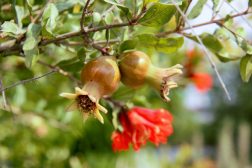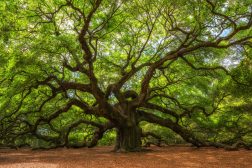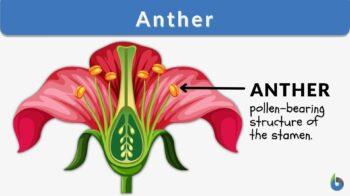
Anther
n., plural: anthers
[ˈæn.θɚ]
Definition: pollen-bearing structure in the stamen (male organ) of the flower
Table of Contents
The floral diversity on this planet is huge. And if you peep into the sub-category of angiosperms among this floral diversity, you’re bound to get amazed. Angiosperms represent the largest group of land plants among all the other flora. Even if one travels far and wide, one may not be able to learn about and see all the angiosperm plants present on this planet in his, her, or their entire life. Can you imagine how big that number might be?
Hundreds, thousands, ten thousand… No. The figure is even bigger than that. There are nearly 300,000 species of angiosperms on this planet. (Christenhusz M.J., 2016) But do they all reproduce in 300,000 different ways? This is a mysterious question here. Although the answer to this is not that difficult. There is a standard and characteristic reproductive organ system in all angiosperms. Whether it be the largest flowering angiosperm, i.e., Rafflesia arnoldii or the smallest flowering angiosperm, i.e., Wolffia spp. or any angiosperm in between these 2 extremes, the reproductive organ system remains the same and basic.
If we study the structure of a flower, there are typically 2 main parts responsible for reproduction. Reproduction is the main purpose for which a plant bears flowers. So, the female reproductive organ in angiosperms is called the gynoecium (pistil or carpel). And the male reproductive organ in angiosperms is called the androecium (stamen). The anther is a part of this stamen. So, if asked a basic question like “is anther a male or female part?’, we can clearly state that it’s a sub-part of the male reproductive system.
Let’s build a deeper understanding of this topic as we read on.
Anther Definition
Stamen Definition: The male reproductive part of a flower is called the stamen. The plural of stamen is stamina or stamens. Within this stamen, there are two sub-parts called filament and anther. The long stalk of the stamen is called the filament in flower whereas the pollen-bearing container is called the plant anther. So, the vital role of supporting an anther is served by the filament. The answer to the basic but frequently asked question “what supports the anther of a flower” is filament.
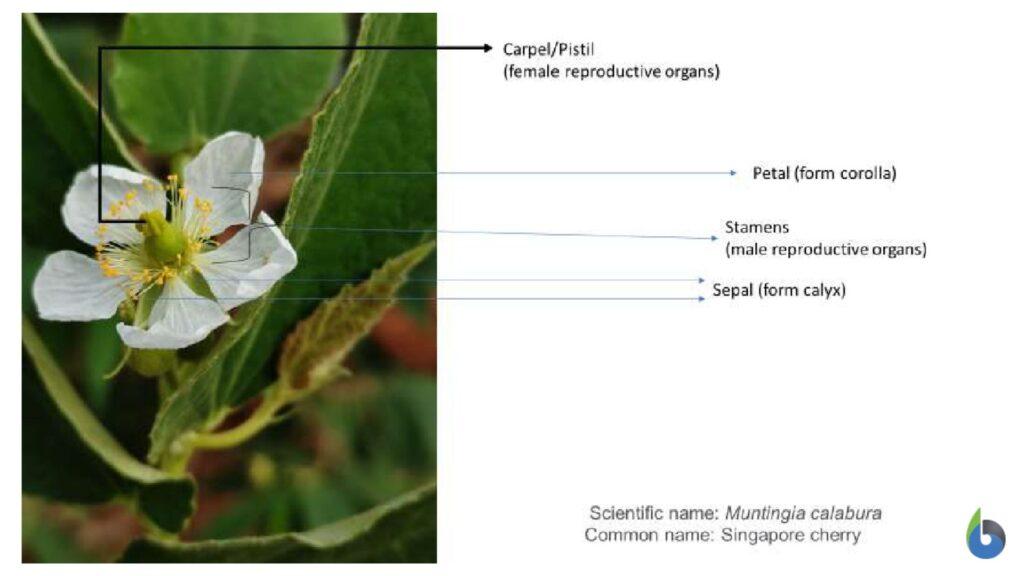
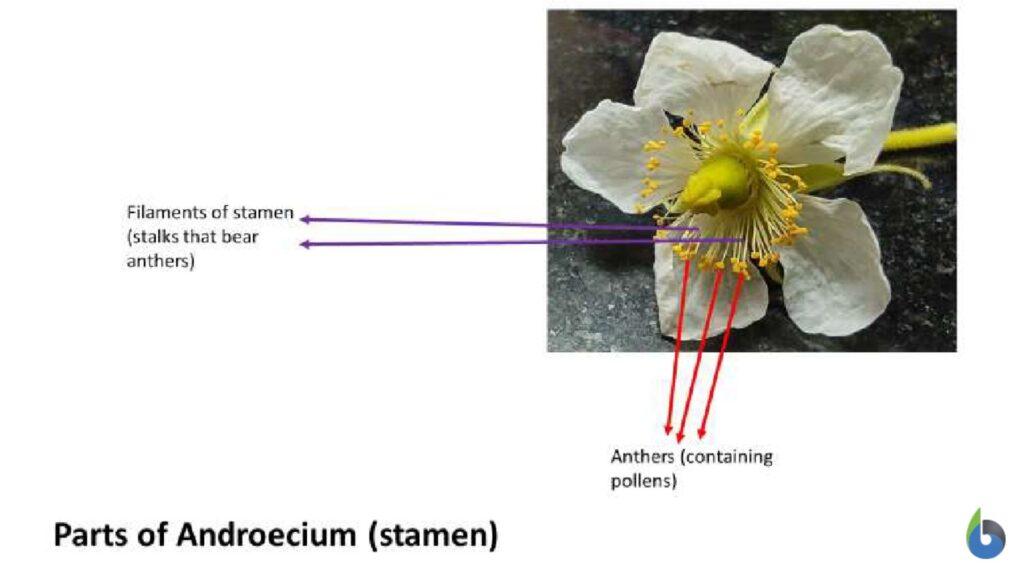
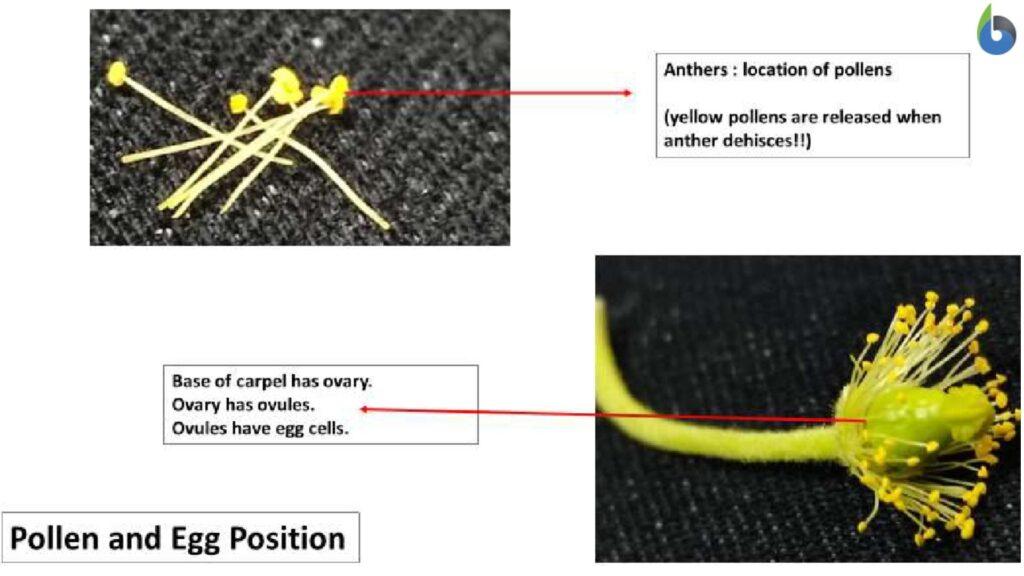
In Biology, the anther in plants is defined as the male, pollen-producing, pollen-carrying, and pollen-bearing organ of the flower. It is borne on the long stalks called filaments. Etymology: from Ancient Greek anthera, feminine of antheros “flowery,” from anthos “flower”.
Structure of Anther
The anther is a knob-like structure that is bilobed. This means that the anther is made up of two lobes which are connected to each other by the central connective tissue. If you look from one side (abaxial side), you clearly see the central line of connection and the connective tissue.
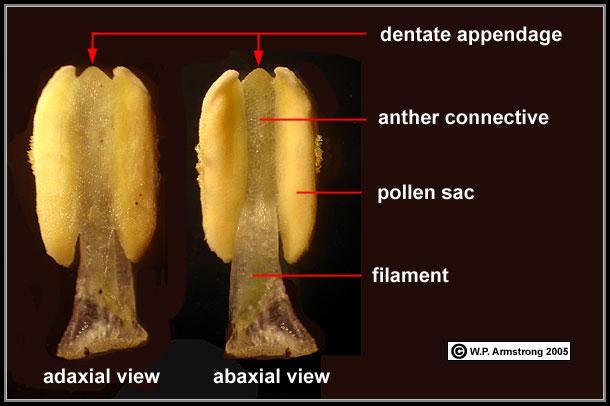
Each lobe of the anther is a separate compartment and is referred to as the theca (plural thecae). Further ahead, each theca in itself contains two microsporangia. This makes a typical anther “tetrasporangiate”. Now, we not only know what is an anther but also, its detailed structure.

Anther Function
The very essential function of anthers is to produce, bear and carry pollen grains. Anther functions in a flower as the source of pollen grains for the plant. Pollen grains are the source of ‘male gametes’ for the plant. Only when a pollen grain successfully lands on the stigma (of the gynoecium) of the plant, the fertilization step can occur. When an anther matures, it dehisces at the ‘line of dehiscence” and bursts open to release the pollen grain content inside it.
The process of this transfer of pollen grains from the anther (of stamen) of a flower to the stigma (of pistil/carpel) of a flower is called the “pollination process”. This transfer can happen between the anther and stigma of the:
- Same flower of the same plant (Self-pollination – specifically “Autogamy”)
- Different flowers but of the same plant (Self-pollination – specifically “Geitonogamy”)
- Different flowers of different plants (Cross-pollination – specifically “Xenogamy/Allogamy”)
Types of Anthers
Based on the “internal structure and the number of thecae” in the anther, anthers can be of different types:
- Monothecal: Anthers with only one theca. Examples: in Cannaceae and Malvaceae families.
- Dithecal: Anthers with two thecae. Examples: in the Fabaceae family.
Based on the “position of anther attachment”, i.e., the point of attachment of anther to the filament of the stamen, anthers can be of different types:
- Basifixed: Standard type of attachment, the anther is attached by ‘its base’ to the tip of the filament.
- Dorsifixed: Anther is attached ‘dorsally’ and almost medially to the tip of the filament.
- Sub-basifixed: Anther is attached ‘near to its base’ to the tip of the filament.
- Versatile anther: Anther is attached ‘very loosely’ and it keeps moving freely at the point of attachment with filament. There are all the options available to the versatile anthers. They can be dorsifixed, basifixed, or sub-basifixed
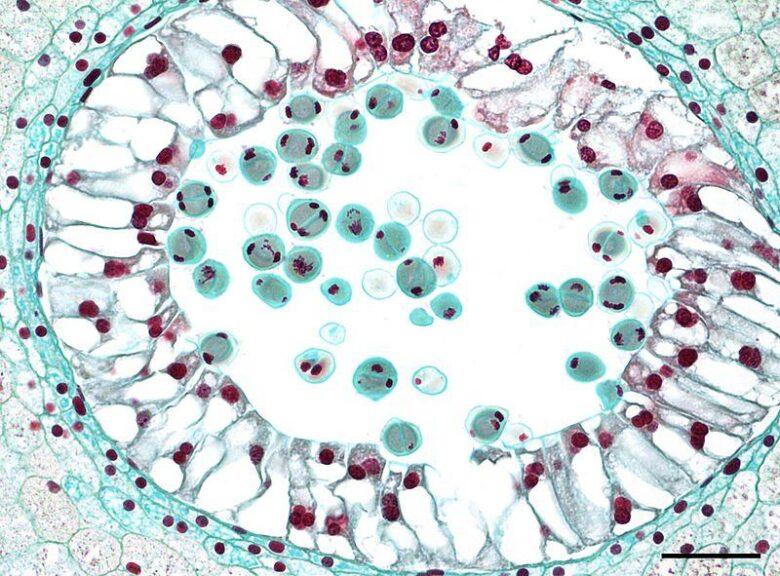
Try to answer the quiz below to check what you have learned so far about anthers.
References
- Christenhusz MJ, Byng JW (2016). “The number of known plant species in the world and its annual increase”. Phytotaxa. 261 (3): 201–217. doi:10.11646/phytotaxa.261.3.1
- Park, H., Park, J.H., Lee, Y. et al. Genome of the world’s smallest flowering plant, Wolffia australiana, helps explain its specialized physiology and unique morphology. Commun Biol 4, 900 (2021). https://doi.org/10.1038/s42003-021-02422-5
- https://www.guinnessworldrecords.com/world-records/83501-smallest-flowering-plant
- https://www.guinnessworldrecords.com/world-records/66511-largest-single-flower
- Michael G. Simpson, in Plant Systematics (Second Edition), 2010
©BiologyOnline.com. Content provided and moderated by Biology Online Editors.

